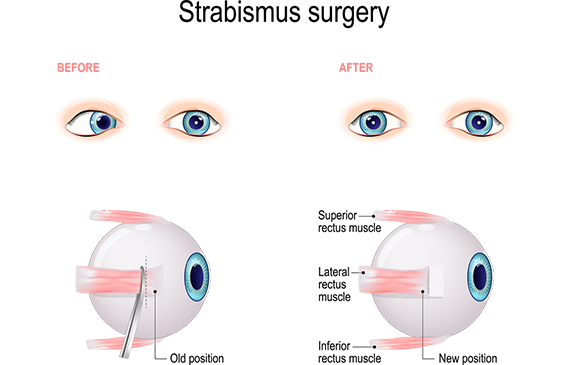Adult Strabismus
Strabismus is a condition in which the eyes are misaligned and may point in different directions. Eye crossing may occur inwards toward the nose, outwards toward the ear, with one eye higher or even rotated and tilted.
While most forms of strabismus are idiopathic (no underlying etiology) or secondary to childhood strabismus, adult strabismus may also be due to medical conditions including, but not limited to:
- Thyroid eye disease (Grave’s disease)
- Brain tumors
- Head trauma
- Stroke
- Myasthenia Gravis
- Following other eye surgery
Double vision, or diplopia, is the most common presenting symptom of adult strabismus. Patients may also experience eye strain, difficulty focusing, loss of depth perception and abnormal head positioning. Patients with childhood strabismus may not experience double vision, but instead notice an inability to maintain direct eye contact which may impact social situations.
Often complex and difficult to evaluate, adult strabismus may go under-diagnosed or untreated prior to seeing a specialist. Adult strabismus consultations are therefore very thorough and may include sensorimotor evaluation, stereo vision and motility testing, in addition to detailed eye exams.
Treatment
It is important to determine any underlying medical conditions, consider further work-up including brain imaging or bloodwork, and review treatment options. Adult strabismus may be alleviated by:
- Eye muscle exercises *we do not offer vision therapy in our office*
- Prism glasses (temporary Fresnel prism, or prescription prism glasses)
- Eye muscle surgery (complex and adjustable suture techniques)


